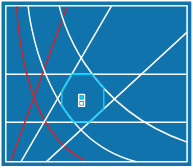Dashboard
The NICaS Dashboard is a cloud-based platform offering management of multiple NICaS test results and devices. The Dashboard is designed specifically for operational needs and allows the medical team to review and manage the patient’s hemodynamic data from a remote location.
Main Features
NICaS Dashboard is easily customizable and provides easy integration into your current EMR/EHR system. With its clear and intuitive UI, It offers:
- Management of test results from all connected NICaS devices;
- Monitoring of NICaS patients;
- Use by any operator;
- Cloud-based and remote connectivity;
- Easy customization of the presented parameters, according to your own preferences;
- E-prescribing connectivity (according to EMR/EHR).
- All NICaS device data and patient exams can be transmitted directly to the NICaS Dashboard, allowing you to manage your various NICaS activities remotely.
- For more information about the NICaS Dashboard and how you can integrate it into your practice, contact us.
The Dashboard is part of the NICaS Ecosystem.
Related Clinical Studies
Utility of NICaS Non-Invasive Hemodynamic Monitoring in Critically Ill Patients with COVID-19
Authors: Wisam Zabeeda, Jonah Benjamin Cohen, Anat Reiner Benaim, Shiri Zarour, Yael Lichter, Idit Matot, Or Goren Conclusion: Non-invasive hemodynamic monitoring via the NICaS device
The Impact of Positive Inotropic Therapy on Hemodynamics and Organ Function in Acute Heart Failure: A Differentiated View
Authors: Juan Cheko, Nikolaos Patsalis, Julian Kreutz, Dimitar Divchev, Georgios Chatzis, Bernhard Schieffer, Birgit Markus Conclusion: Patients with acute decompensated HF benefit from positive inotropic
Comparing elective and emergency caesarean section by using bioimpedance method
Authors: Zuhal Çavuş, Ayşe Vahapoğlu, Ülkü Aygen Türkmen, Fatma Ketenci Gencer, Elif Yıldız Conclusion: Understanding normal hemodynamic values before, during, and after C/S is feasible
Noninvasive Hemodynamic Evaluation Following TAVI for Severe Aortic Stenosis
Authors: Tzlil Grinberg, Yaron Aviv, Mordehay Vaturi, Leor Perl, Maya Wiessman, Hanna Vaknin-Assa, Pablo Codner, Yaron Shapira, Ran Kornowski, Katia Orvin Conclusion: Unique short‐term adaptive
Correlation of Impedance Cardiography-Derived and Cardiac Magnetic Resonance-Derived Stroke Volumes
Authors: Pedram Hassan-Tash, Umar Ismail, Iain D C Kirkpatrick, Amir Ravandi, Davinder S Jassal, Brett Hiebert, Malek Kass, Richard A Krasuski, Ashish H Shah Conclusion:
Non-invasive hemodynamic profiling of patients undergoing hemodialysis-a multicenter observational cohort study
Authors: Keren Doenyas-Barak, Marcia H. F. G. de Abreu, Lucas E. Borges, David Pereg, Ilya Litovchik, Shmuel Fuchs and Sa’ar Minha Conclusion: Non-invasive assessment of


